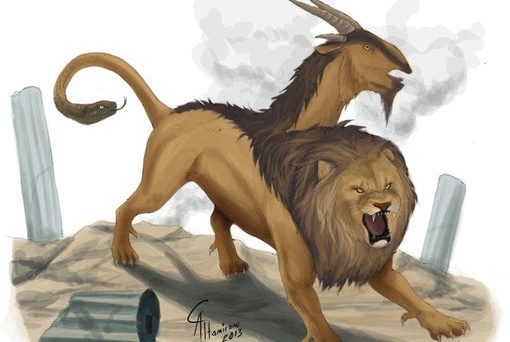
What is a Chimera?
The idea of a chimera is thought to date back to ancient Greek mythology. It is often depicted as a hybrid creature that has the heads of a lion and a goat, with a snake’s head for a tail. It has also been used to mean any fictional creature composed of multiple different animals.
Today the term chimera can be found in multiple biological disciplines. In embryology, chimera is a term used to describe a combination of cells from different individuals. With better gene editing technology scientists are now hoping that these chimeras may be the solution to one of our biggest medical issues.
The latest breakthrough
Last month it was widely reported that a team from the University of California, Davis were creating embryonic chimeras by injecting human stem cells into pig embryos.
Last month it was widely reported that a team from the University of California, Davis were creating embryonic chimeras by injecting human stem cells into pig embryos. These embryos are being allowed to develop for 28 days before pregnancies are terminated.The aim is for the pig embryo to develop normally but with a pancreas made almost exclusively of human pancreas cells.
In a review recently published in Stem Cell Research and Therapy, Bourret et al. give a comprehensive overview of the emerging practice of using human-animal chimeras to grow human organs and crucially outlines the ethical issues and barriers the practice faces.
So how do you make a Chimera?
In Greek mythology the chimera was the spawn of monsters Typhon and Echidna. In real life the process is much more scientific and is possible through the use of Pluripotent stem cells (PSC). These cells can differentiate into any cell type of the organism.
The process used by the research group involved the much talked about CRISPR gene editing technique to remove the DNA that would code for the growing of a pancreas from a fertilized pig embryo.
The process used by the research group involved the much talked about CRISPR gene editing technique to remove the DNA that would code for the growing of a pancreas from a fertilized pig embryo.
This creates a genetic void, blocking the development of the organ. They then inject human induced PSC into the embryo, filling the void. The Embryo is then implanted into a sow and allowed to develop for 28 days.
Why is This Necessary?
There is currently a critical shortage of organs for transplant and Bourret et al. argues that this has created an indisputable medical need for the farming of chimeric animals. In Europe alone there were more than 60,000 people on the organ transplant waiting list in 2013.
Pigs are the main animals being discussed because they are attractive options for bearing human organs. Pigs’ organs are a similar size to a human’s and there is already substantial knowledge of pig cells in human bodies from xenotransplantation. This knowledge will help overcome barriers such as infectious and immunological risks when transplanting.
Unlike human transplants or xenotransplants, growing an organ from the patient’s own cells would remove the need for immune suppressants and gene editing can help to remove pig retroviruses, reducing the risk of zoonotic diseases.
What are the Ethical Concerns?
In the review the authors discuss the ethical concerns the practice would face and pays particular attention to three issues they feel are most prominent.
In the review the authors discuss the ethical concerns the practice would face and pays particular attention to three issues they feel are most prominent. These are the risk of consciousness resulting from too high a contribution of human cells in the animal’s brain, chimeras physically developing human features and chimeras producing human gametes.
These might sound like nightmarish, dystopian possibilities but they are intended to be the absolute worst case scenarios, with the likelihoods of them happening dismissed by the authors, who find none of the ethical concerns to be insurmountable.
The authors also address animal welfare saying that current experiments performed on pigs are already highly regulated to avoid unnecessary suffering and that we farm pigs for consumption so using their organs for a different purpose should not face further ethical debate.
There are additional ethical concerns for the safety of patients with fears that retroviruses in the pig genome could be transferred to humans and that human tissue grown in animals might be a source of zoonosis. The authors warn that the impossibility to anticipate these potential risks should call for caution.
What barriers does the procedure face?
The authors state that public perception is a significant barrier to overcome. The idea of a chimera does not necessarily convey the scientific reality and fear from ignorance will result in resistance to it.
The authors state that public perception is a significant barrier to overcome. The idea of a chimera does not necessarily convey the scientific reality and fear from ignorance will result in resistance to it.
They say that public concerns about ‘unnaturalness’ must be responded to and the ethical issues openly discussed. The medical need of the practice to treat desperately ill people when alternatives are absent must also be emphasized.
Farming chimeras for organs also raises legal issues and these will vary across countries. For instance in the UK the creation of human-animal chimeras by grafting human embryonic cells or cell lines into animals is permitted. However transferring a predominantly human embryo into an animal is forbidden. The authors say that differences between countries will most likely affect the speed of treatment development in different countries.
Overall the authors feel that if the prerequisites of ensuring public understanding and meeting all stated ethical concerns that they lay out in their review are met, then the use of human-animal chimeras for the farming of human organs may prevail and with it, an answer to our chronic organ shortage.
Comments